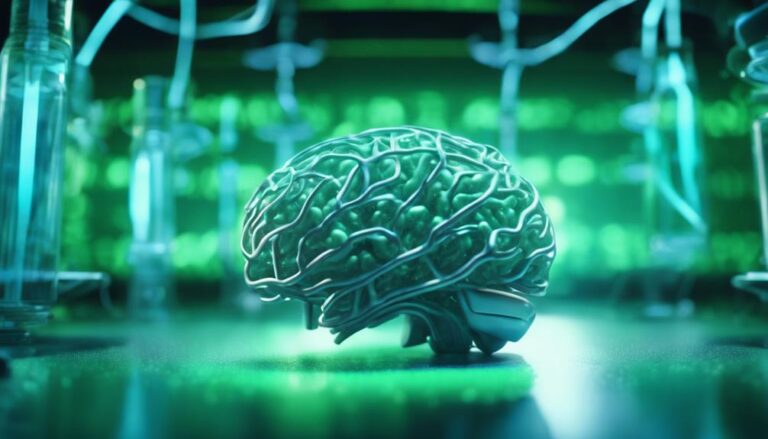3 Essential Visual Effects for Animation Video Production
As you set out to create an animation video that truly mesmerizes your audience, you'll want to focus on three essential visual effects that can make all the difference. By incorporating realistic motion, riveting backgrounds, and dramatic lighting, you'll be able to transport your viewers to new and immersive worlds. But what exactly goes into achieving these effects, and how can you use them to evoke emotions and enhance the mood of your animation? Let's take a closer look at each of these essential visual effects and how you can master them to take your animation to the next level.
Key Takeaways
- Realistic motion with physics engines creates authentic interactions between objects, simulating fundamental laws of motion and gravity.
- Captivating backgrounds and environments transport audiences to fantastical domains, eerie landscapes, or everyday settings using particle simulations and 3D modeling.
- Dramatic lighting and shading effects evoke feelings of warmth, eeriness, or wonder, adding depth and dimensionality to environments and creating emotional undertones.
- Utilizing fluid simulation recreates the movement of liquids, gases, or soft bodies, generating realistic simulations of complex phenomena like ocean waves or fire propagation.
Realistic Motion With Physics Engines
By harnessing the power of physics engines, you can inject realism into your animations by simulating the fundamental laws of motion, gravity, and energy.
This allows you to create authentic interactions between objects, making your animations more engaging and believable.
For instance, you can use Rigid Body Dynamics to simulate the behavior of solid objects, such as a rolling ball or a falling brick.
The engine will accurately calculate the object's trajectory, taking into account factors like friction, mass, and velocity.
You can also utilize Fluid Simulation to recreate the movement of liquids, gases, or soft bodies, like water, smoke, or fabric.
This will enable you to generate realistic simulations of complex phenomena, such as ocean waves or fire propagation.
Captivating Backgrounds and Environments
Step into the world of enchanting backgrounds and environments, where you can transport your audience to fantastical domains, eerie landscapes, or everyday settings that pulse with life and atmosphere. As an animator, you know that mesmerizing backgrounds and environments are essential to immersing your viewers in your story. Whether you're creating vibrant landscapes or fantasy worlds, the right visual effects can make all the difference.
Crafting Engaging Backgrounds and Environments:
| Environment Type | Visual Effect Techniques | Mood and Atmosphere |
|---|---|---|
| Fantasy Worlds | Particle simulations, 3D modeling | Whimsical, magical |
| Vibrant Landscapes | Color grading, texture mapping | Lush, vibrant |
| Eerie Landscapes | Atmospheric fog, lighting effects | Ominous, foreboding |
| Everyday Settings | Architectural modeling, set dressing | Realistic, relatable |
| Futuristic Cities | Neon lighting, 3D rendering | Futuristic, high-tech |
Dramatic Lighting and Shading Effects
As you carefully craft your enchanting backgrounds and environments, you're now ready to elevate them with dramatic lighting and shading effects that will transport your audience to new emotional heights.
By mastering the art of lighting, you can create an atmosphere that immerses your viewers in the world you've created. Think of lighting as the emotional undertone of your scene – it can evoke feelings of warmth, eeriness, or wonder.
To achieve mood enhancement, you can experiment with different lighting techniques, such as high-contrast lighting, volumetric lighting, or even subtle ambient occlusion. Shading effects can also add depth and dimensionality to your environments, making them feel more realistic and engaging.
Frequently Asked Questions
What Software Is Best for Animation Video Production Beginners?
When you're new to animation video production, you'll want software with intuitive design tools and a user-friendly interface. You'll find that Blender, Toon Boom Harmony, or Adobe Animate are great options, offering a gentle learning curve and powerful features to get you started.
How Do I Create Realistic Character Facial Expressions?
When crafting realistic character facial expressions, you'll study Facial Anatomy to understand muscle movements, then create an Expression Mapping system, assigning specific emotions to 3D model facial points, allowing for nuanced, believable performances that captivate your audience.
What's the Ideal Frame Rate for Smooth Animation Playback?
When you're aiming for silky-smooth playback, you'll want to conduct frame rate testing to determine the ideal pace for your dynamic animation. Typically, 24fps or 30fps will provide a cinematic feel, but you might need 60fps or higher for fast-paced action sequences.
Can I Use Royalty-Free Assets in Commercial Animation Projects?
When using royalty-free assets in commercial projects, you'll need to understand asset licensing and copyright laws to avoid legal issues; always review licenses carefully to certify you're cleared for commercial use, or risk facing costly repercussions.
How Do I Optimize Animation Files for Web Upload?
"When uploading animation files to the web, you'll need to compress them using tools like HandBrake or FFmpeg, then optimize for upload protocols like HTTP or FTP, ensuring fast and seamless transfer of your files."
Conclusion
As you bring your animation video to life, remember that these three essential visual effects are the keys to revealing an immersive experience.
By harnessing the power of physics engines, mesmerizing backgrounds, and dramatic lighting and shading, you'll transport your audience to new worlds and evoke emotions that linger long after the credits roll.
With these visual effects mastered, your animation video will be an unforgettable journey that leaves a lasting impact.






